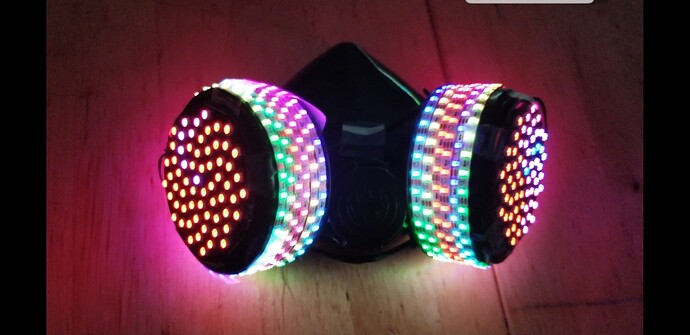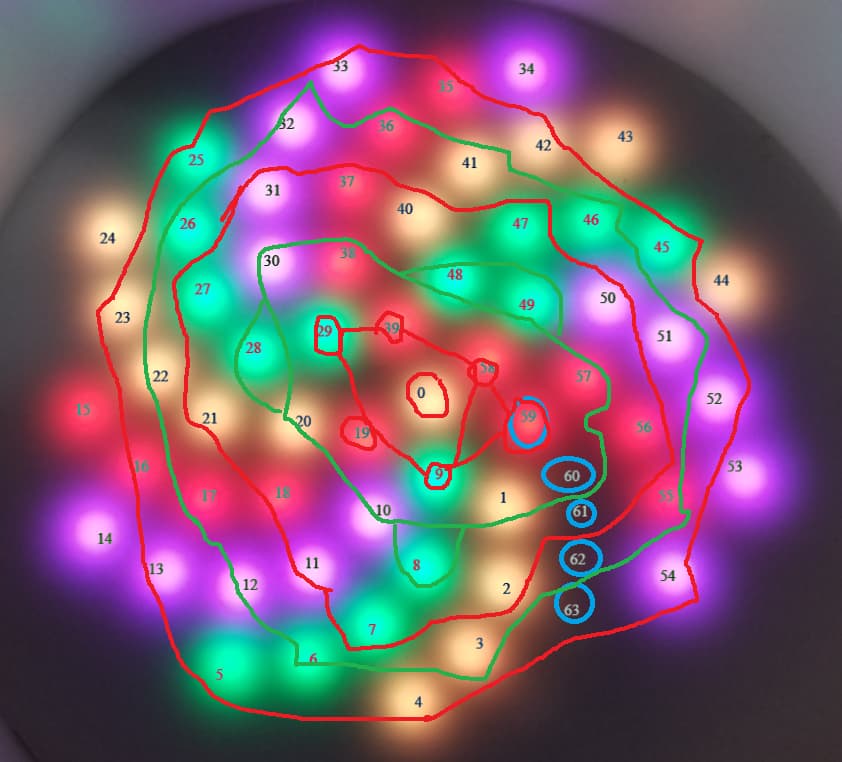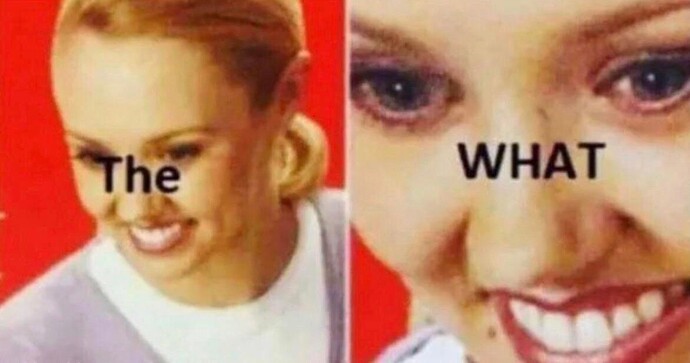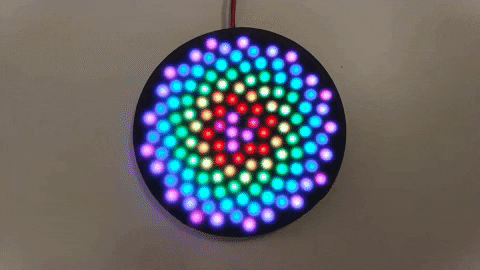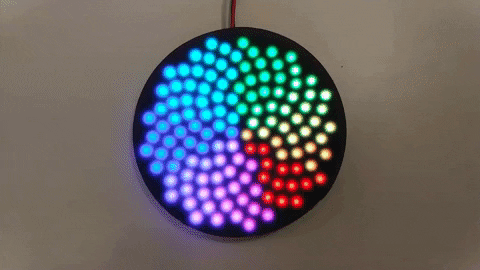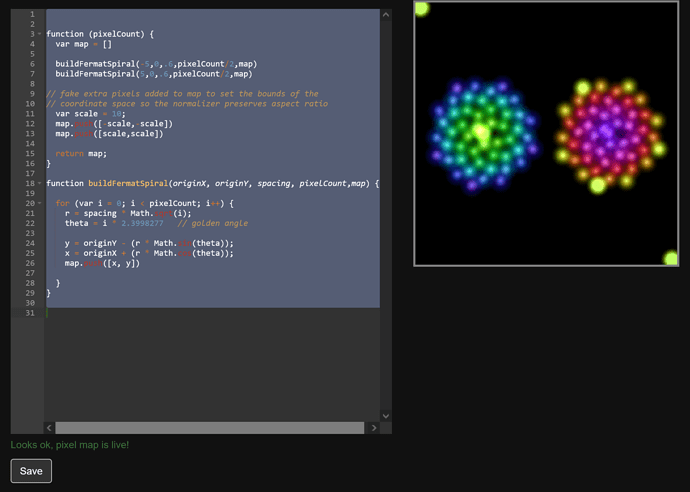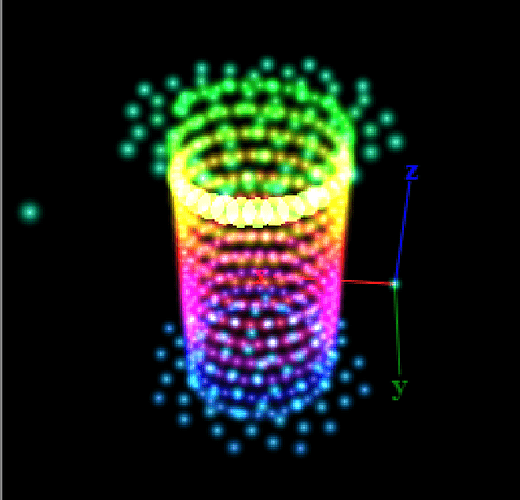so I’m building a new mask using Jason Coon’s amazing Fibonacci 64 LED PCB on the face plate. The last version was using concentric rings which mapped fairly easily with if(index > X && index < y) with start/end of each ring.
Here’s a picture of the completed mask for reference.
The new F64 itself could be mapped easily enough in the online tool.
The strips spiraled around the sides of the can would be easy to map mathematically themselves.
Combining both of these different objects into a single map seems impossible.
I bet Jason or someone smarter than me could figure out the calculus to describe both of these object perfectly mathematically, but it’s beyond me.
I also tried mapping the F64 into concentric-ish rings, which might be like trying to fit a spiral peg into a round hole.
But even just creating the arrays to contain the indexes of each ring, and checking if the current pixel was in a specific ring ends up dropping FPS to 7ish. I could maybe use help with optimizing that code too. Or should I give up?
My main question is - Is this even doable and should I even try to attempt mapping something like this?
Another complication is wanting different maps for different patterns, so I’m trying to do the mapping in the pattern, not the map tab.
e.g. the concentric rings map would be nice for a sound pattern to show the energyAverage light up each concentric ring as the volume increases, eventually lighting up rows of the spiral round the sides.
But it would also be interesting to see each of the “columns” of 5 leds in the F64 light up as a separate frequency meter, with 5 lines of resolution. but I have no idea how that would extend to strips on the side.
I’m open to suggestions including demoralizing criticism.
